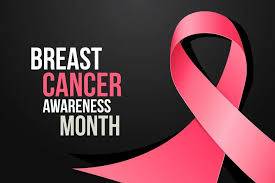Overview
The illness known as breast cancer is caused by abnormal breast cells that proliferate and develop into tumors. Tumors have the potential to grow throughout the body and become deadly if ignored.
The milk ducts and/or the breast's milk-producing lobules are where breast cancer cells first proliferate. The first kind, known as "in situ," can be identified early on and is not life-threatening. It is possible for cancer cells to invade neighboring breast tissue. This develops tumors that cause lumps or thickening.
Metastasis is the process by which invasive tumors move to neighboring lymph nodes or other organs. Metastasis can be life-threatening and lethal.
Treatment is determined by the patient, the cancer's type, and its extent of dissemination. Treatment comprises surgery, radiation therapy and medicines.
Scope
2.3 million women worldwide had a breast cancer diagnosis in 2022, and 670,000 people died from the disease. All across the world, breast cancer affects women at any age after adolescence; however, its prevalence rises with age.
Global estimations show stark differences in the incidence of breast cancer based on human development. For example, in nations with a very high Human Development Index (HDI), 1 in 12 women may receive a breast cancer diagnosis during their lifetime, and 1 in 71 will pass away from the disease.
In comparison, 1 in 48 women will pass away from breast cancer in nations with a low HDI(Human Development Index), even though only 1 in 27 women will receive a diagnosis of the disease during their lifetime.
WHO IS AT RISK ?
The strongest risk factor for breast cancer is female gender. Women get breast cancer in about 99% of cases, while men get breast cancer in 0.5–1% of cases. The care of breast cancer in men is based on the same concepts as in women.
Ageing, obesity, heavy alcohol consumption, radiation exposure history, family history of breast cancer, reproductive history (including age at first pregnancy and menstruation onset), tobacco use, and postmenopausal hormone therapy are some of the factors that raise the risk of breast cancer.
With the exception of age (over 40) and gender (female), women without any other known breast cancer risk factor account for around half of all cases of breast cancer. BREAST CANCER AWARENESS MONTH
SIGNS AND SYMOTONS OF BREAST CANCER
Early cancer identification is crucial because the majority of people do not exhibit any symptoms when the disease is still in its early stages.
Combinations of symptoms are common in breast cancer, particularly in more advanced stages of the disease. Breast cancer symptoms can include:
1.a thickening or mass in the breast, usually painless
2.alteration in the breasts' size, shape, or appearance
3.skin changes such as dimpling, redness, pitting, or others
4.alteration in the appearance of the nipple or the skin (areola) surrounding it
5.unusual or blood-filled nipple fluid.
Even if a breast lump is not painful, the person should however get medical attention if it is abnormal.
Not all breast lumps are cancerous. When malignant breast tumors are tiny and have not migrated to neighboring lymph nodes, they have a better chance of being effectively treated.
Breast cancers may spread to other regions of the body and create various symptoms. Although it is possible to have cancer-bearing lymph nodes that are not felt, the lymph nodes under the arm are frequently the first detectable site of dissemination.
Cancerous cells have the ability to spread to other organs such as the brain, liver, lungs, and bones over time.
Once they get at these locations, further cancer-related symptoms including headaches or bone pain could manifest.
TREATMENT
The course of treatment for breast cancer is determined by the specific subtype of the disease and the extent to which it has spread to lymph nodes (stages II or III) or other regions of the body (stage IV).
To reduce the likelihood of a cancer recurrence, doctors combine therapy.
These consist of:
Breast tumor removal surgery, treatment with radiation Therapy to lower the chance of recurrence in the breast and adjacent tissues, drugs that destroy cancer cells and stop them from spreading, such as hormone treatments, chemotherapy, or biological therapies with specific targets.
Early initiation and completion of treatment for breast cancer results in greater efficacy and higher tolerance.
A lumpectomy(removal of the cancerous tissues surgically), or removal of only the malignant tissue, or a mastectomy( involves removing the entire breast).
To evaluate the cancer's potential for metastasis, lymph nodes may also be surgically removed.
Radiation therapy reduces the likelihood of cancer returning on the chest wall and treats any microscopic malignancies that are still present in the breast tissue and/or lymph nodes.
Advanced malignancies may not always hurt, but they can erode through the skin to leave open sores (ulceration). Women who have non-healing breast sores ought to consult a physician to have a biopsy done.
The biological characteristics of breast cancer, as ascertained by specialized testing, are taken into consideration while choosing medications for treatment (tumour marker determination).
The WHO Essential Medicines List (EML) already includes the vast majority of medications used to treat breast cancer.
For aggressive tumors, lymph nodes are removed during cancer surgery. In the past, it was believed that total axillary dissection—the removal of the entire lymph node bed beneath the arm—was required to stop the spread of cancer.
Sentinel node biopsy, a smaller lymph node technique with fewer consequences, is now the preferred method.
Based on the biological subtyping of the malignancies, medical treatments for breast cancers can be administered either before (known as "neoadjuvant") or after (known as "adjuvant") surgery. Triple negative breast cancer—a subtype in which the estrogen receptor (ER), Progesterone receptor (PR) or HER-2 receptors are not expressed—is one of the more aggressive forms of the disease.
Endocrine (hormone) therapy, including tamoxifen or aromatase inhibitors, are likely to be effective in treating cancers that express the estrogen receptor (ER) and/or progesterone receptor (PR). These oral medications, which are administered for five to ten years, almost completely eliminate the risk of these "hormone-positive" malignancies returning. Menopause symptoms may be brought on by endocrine treatments, although they are usually well tolerated.
Chemotherapy is required for "hormone receptor negative" cancers, which do not express either the ER or the PR, unless they are very small. Today's chemotherapy regimens are typically administered as outpatient therapy and are very effective in lowering the risk of cancer spread or recurrence. In most cases, hospitalization is not necessary for breast cancer chemotherapy patients unless there are complications.
Treatment options for HER-2 positive breast tumors include targeted biological medicines like trastuzumab. HER-2 positive breast cancers are those that independently overexpress the HER-2/neu oncogene. Chemotherapy is administered in conjunction with targeted biological therapies to maximize its ability to eradicate cancer cells.
In the treatment of breast cancer, radiotherapy is crucial. Radiation therapy can spare a woman from needing a mastectomy if her breast cancer is detected in its early stages. Even after a mastectomy, radiation therapy can lower the chance of cancer recurrence in later stage diseases. In certain cases, radiation therapy for advanced stages of breast cancer may lessen the chance that the patient will pass away from the illness.
The entire course of treatment is necessary for breast cancer therapy to be effective. A partial course of treatment has a lower chance of success.
GLOBAL IMPACT
Between the 1980s and 2020, the age-standardized death rate from breast cancer in high-income nations decreased by 40% .
A 2-4 percent annual reduction in breast cancer mortality has been attained by the countries that have been successful in doing so.
The implementation of initiatives aimed at enhancing the outcomes of breast cancer patients is contingent upon the essential reinforcement of the health system in order to provide proven therapies.
These are also critical for the treatment of non-communicable diseases (NCDs) and other malignancies. For instance, possessing trustworthy referral pathways from clinics for primary care to hospitals in districts to centers specifically for cancer.
The same strategy needed to manage cervical, lung, colorectal, and prostate cancers also has to be established for referrals from primary care offices to secondary hospitals and specialty cancer centers.
Consequently, breast cancer is considered a "index disease," meaning that treatment protocols for other malignancies can be developed based on its example.
RESPONSE FROM WORLD HEALTH ORGANIZATION
The WHO Global Breast Cancer Initiative (GBCI) aims to prevent 2.5 million breast cancer deaths worldwide between 2020 and 2040 by reducing the global breast cancer mortality rate by 2.5% annually. A 2.5% annual reduction in breast cancer mortality worldwide will prevent 25% of breast cancer deaths by 2030 and 40% of breast cancer deaths among women under 70 by 2040. Three key components are needed to accomplish these goals: rapid diagnosis, comprehensive breast cancer management, and health promotion for early detection.
More women would visit doctors when they first suspect breast cancer and before any cancer that is already present has progressed if public health education was given to raise awareness among women of the symptoms and signs of the disease and help them and their families understand the value of early detection and treatment. This is achievable even in the absence of mammography screening, which is currently impractical in many nations.


